
A stakeholder can be defined as a person or entity that has an interest in your Six Sigma project and can either affect or be affected by your project. Understanding whether a stakeholder is supportive or resistant to your project is important to know at the beginning of your project. Additionally, the degree of influence they exert in your organization will help shape your strategy of gaining more support or mitigating negativity. This can be accomplished by doing a stakeholder analysis.
Overview: What is a stakeholder analysis?
Here are the potential stakeholders for your organization and project:
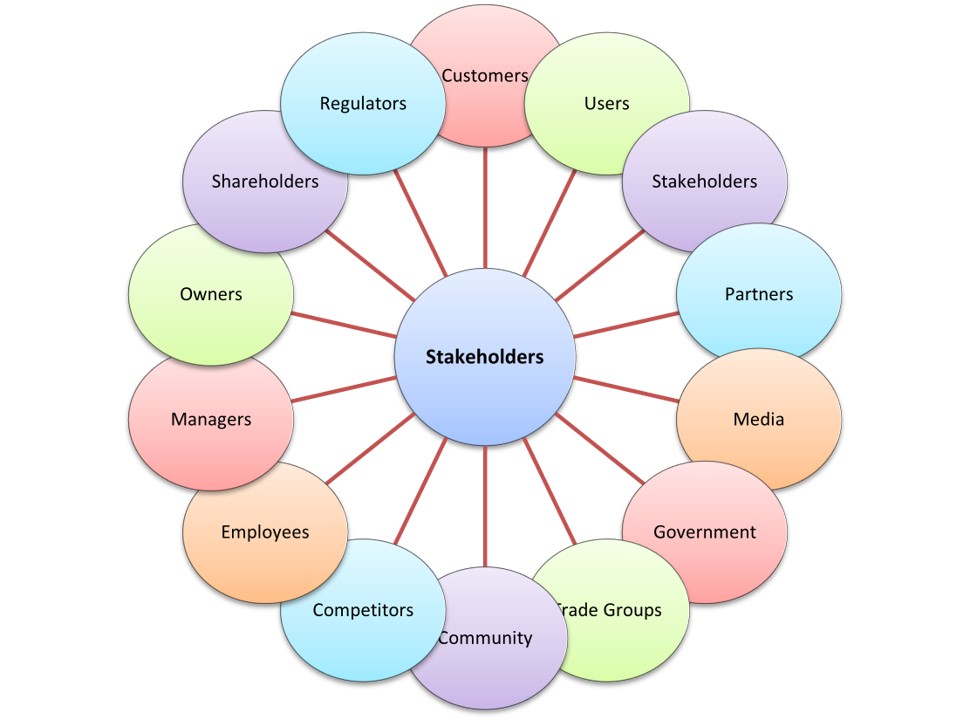
The following might be a signal you are not doing a good job in managing your stakeholder expectations:
- Projects take too long to complete because of stakeholder resistance
- Recommendations are not implemented resulting in diluted project outcomes
- Projects are canceled because of little or no progress
- Project scope had to be significantly altered or changed due to stakeholder resistance
Here are the steps for doing a stakeholder analysis:
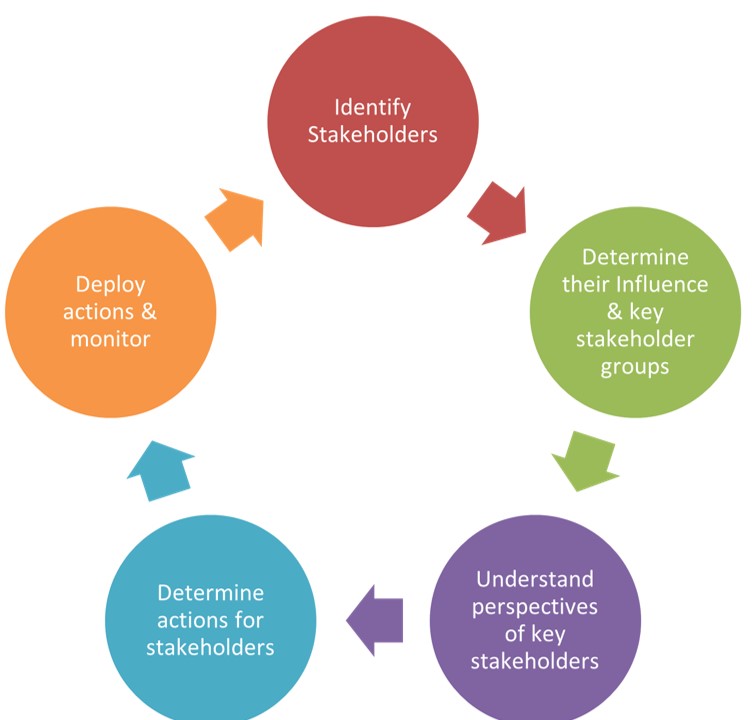
Identify Stakeholders
Identify all the stakeholders involved in your project. This is to be sure you do not forget key groups of people who could impact your project. Brainstorm with your team to identify the stakeholders and also have a discussion with your identified stakeholders to see if you are missing any key set of stakeholders. You can also use such tools as project:charters, SIPOC, and process maps.
Determine Influence
Group your stakeholders who are similar into one group and prioritize them by considering the influence of the stakeholders. Keep in mind influence and power can come from a variety of sources and is not based only on position. Stakeholders may have influence if they have expert power derived from knowledge or skill, referent power, legitimate power, information power, charismatic power, etc.
Understand stakeholder perspectives
Have an active discussion with the stakeholders to understand where they are coming from. Stakeholders are classified into one of four categories.
-
- Stakeholders who have high influence and are supportive of your project
- Stakeholders who have high influence and are not supportive of your project
- Stakeholders who have low influence and are supportive of your project
- Stakeholders who have low influence and are not supportive of your project
Determine action plans
Your focus should be on those stakeholders who have a high influence but are not currently supportive of our project since they could derail your project.
Deploy and monitor your actions
This step in the process is vital since it provides input whether the actions are successful or if you need revisions or additional actions. This is a process that you have to continue to use over the course of the project since stakeholders may change due to organizational changes or the perspectives and thinking of the stakeholders may change over time.
Below is an example of an influence-support grid and stakeholder analysis. Use the grid to start your analysis and develop the matrix for your actions.
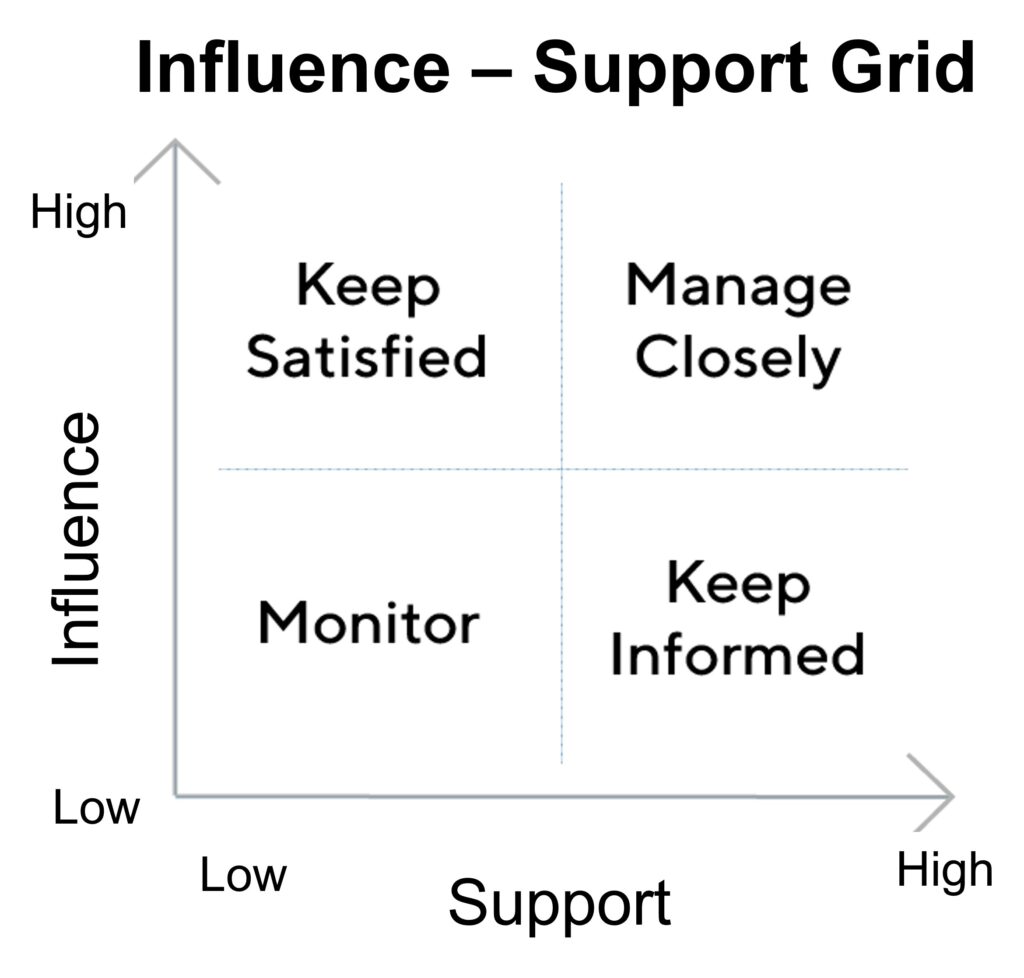
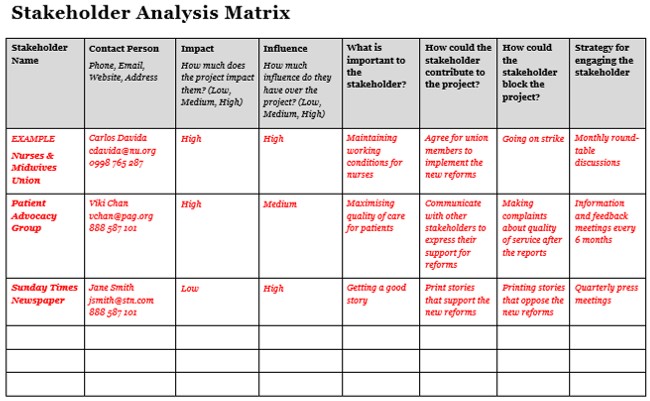
3 benefits of a stakeholder analysis
If your stakeholders are aligned and supportive of your project, you will have a higher probability of success. Here are some of the benefits of doing a stakeholder analysis.
1. Helps enlist key organizational people
By approaching key organizational influencers, executives, or valuable stakeholders for help early in your project, you can leverage their knowledge and wisdom to help guide your project to a successful outcome. Enlisting these players early on will also increase the chances you will earn their support for your project.
2. Gain early alignment among all stakeholders on your project’s goals and plans
Because your stakeholder analysis will help you determine which people to involve in the project, you will be able to bring them together for a kickoff and early-stage meetings to communicate the project’s strategic objectives and plans. A stakeholder analysis will help ensure everyone starts the project with a clear understanding of what success will look like and how they can contribute to that successful outcome.
3. Address conflicts or issues early on
Without a stakeholder analysis your project could be well underway before you realize a key person in your organization does not see the value of your initiative, or would prefer to redeploy some of your resources to other projects. That person might actively work to thwart or derail your project.
If you had conducted a stakeholder analysis before you began, you would have likely identified this person as potentially important to your project’s success. You could have presented your plan, listened to their objections, and worked to earn their approval ahead of time.
Why is a stakeholder analysis important to understand?
Once you understand the purpose of your stakeholder analysis, you can plan your strategies for reacting to those who are supportive or resistant to your project. This will prevent possible disruption and delay of your project.
Not everyone will be supportive of your project
It is important to understand that not everyone in your organization may support your project. Specific actions may be needed to overcome resistance otherwise you reduce your chances of success.
Maintaining support is as important as getting support
Don’t ignore stakeholders just because they are already supportive. They may alter their behavior during your project, so continue to communicate with them to sustain their support.
High influence versus low influence
Once you have categorized your stakeholders in terms of their organizational influence, you will want to focus on those with the highest influence especially if they are negative. It is important to quickly develop appropriate strategies to mitigate any negativity from high influence stakeholders.
An industry example of a stakeholder analysis
A project was chartered to improve the picking and packing of products in the warehouse. A stakeholder analysis was suggested by the company Master Black Belt (MBB) as part of the improvement team’s work. Below is a sample of the Influence-Support Grid and Stakeholder Analysis Matrix.
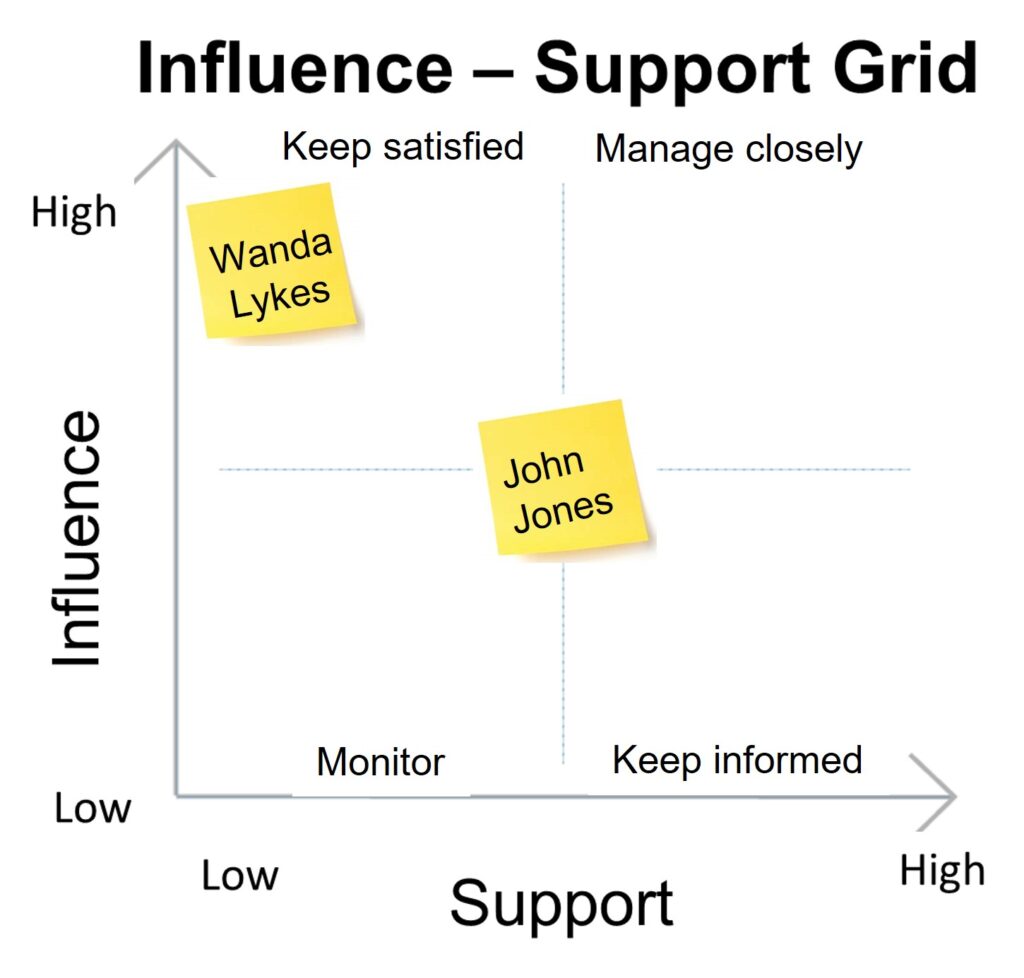
3 best practices when thinking about a stakeholder analysis
The purpose of a stakeholder analysis is to identify and gather support for your project from the different organizational constituencies who will be impacted by your project. Here are a few tips to help you with this process.
1. Carefully and accurately identify key stakeholders
Do some brainstorming to identify the list of people who will be impacted by the outcomes of your project. Assess their level of influence in the context of your project and to what degree do you think they support what you are doing. Try to keep this list somewhat confidential by not using names but possibly functions.
2. Keep your stakeholders informed and motivated
Here are a few ways to do that:
- Send satisfaction surveys – sending satisfaction surveys helps you keep track of any changes in stakeholders’ behaviors
- Constant communication – frequent communication on the progress of the project gives a sense of belonging to project stakeholders
- Sending regular status reports – Sending out regular status reports gives your project stakeholders a sense of direction on where the project is coming from and headed. This essential project management report enables them to appreciate the impact their effort has had on the project.
3. Use these best practices:
- Performing the analysis proactively at the beginning of the project
- Consider all the stakeholder groups
- Have a strategy to address stakeholder concerns
- Have specific actions to address the unsupportive stakeholders
- Don’t dilute improvement recommendations and actions due to opposition from key stakeholder groups
Frequently Asked Questions (FAQ) about a stakeholder analysis
What is the purpose of a stakeholder analysis?
In the context of a Lean Six Sigma project, the purpose of a stakeholder analysis is to identify the key stakeholders and the degree to which they could influence your project. It is important to have a clear understanding of each stakeholder, and what their level of influence and support are at the beginning of your project.
What are some of the advantages of a stakeholder analysis?
By understanding the level of influence and support of your stakeholders, you can determine the degree to which you should communicate with each. You can then decide on whether to garner additional support or seek to overcome resistance to your project.
When should you do a stakeholder analysis?
The best time to conduct a stakeholder analysis is during the early stages of your project to understand where things currently stand with your project. This analysis should be conducted on a regular interval, such as when your project enters a new phase of DMAIC. This will show how your stakeholders are evolving as the project progresses and where adjustments should be made to update your stakeholder strategies if needed.
Takeaways of a stakeholder analysis
Your organizational projects require participation, guidance, and approval from a wide range of people across your organization. If they don’t understand or agree with your project’s objectives or execution plan, they can become obstacles to the project’s success.
But, if you enlist the help and approval of these stakeholders early on, you can turn many of them into avid supporters of your initiatives. Therefore, it is important to conduct a stakeholder analysis before launching any project, identifying all potential stakeholders, and determining how to earn their support based on their levels of influence and resistance.
